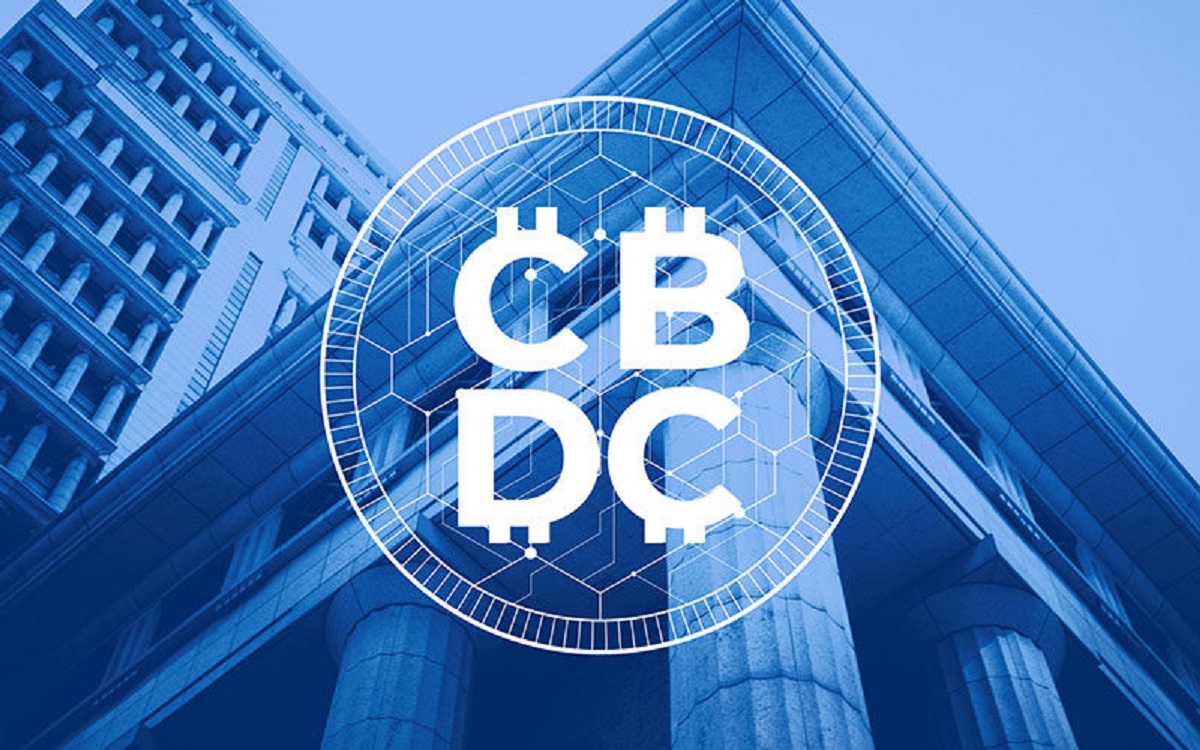Introduction
Welcome to the world of CBDC, one of the most talked-about topics in the world of cryptocurrency and central banking. CBDC, short for Central Bank Digital Currency, is a new form of digital currency that is issued and regulated by a central bank. With the increasing popularity and acceptance of cryptocurrencies like Bitcoin and Ethereum, many central banks around the world are exploring the concept of CBDC as a way to modernize their financial systems and enhance payment technologies.
The idea behind CBDC is to offer a digital equivalent of traditional, government-issued fiat currencies like the US dollar or the euro. However, unlike cryptocurrency, which is decentralized and operates independently of any central authority, CBDC is controlled and regulated by central banks. This means that its value is stable and not subject to the volatility commonly associated with cryptocurrencies.
The rise of CBDC reflects the increasing demand for digital payment solutions and the potential to enhance financial inclusion. With CBDC, governments can provide secure and efficient digital transactions, enabling faster payments and reducing the reliance on cash. This can be particularly beneficial for unbanked populations who currently lack access to traditional financial services.
CBDC also has the potential to revolutionize monetary policy. By digitizing the national currency, central banks can monitor and control the flow of money more effectively, enabling them to implement more targeted policies to stabilize the economy and manage financial crises. Additionally, CBDC can provide greater transparency and traceability, which can help combat illicit activities such as money laundering and terrorist financing.
However, the introduction of CBDC is not without its challenges. There are concerns about privacy and data security, as transactions made with CBDC will be recorded and stored by central banks. There is also the issue of interoperability – ensuring seamless transactions between different CBDC systems globally.
Overall, CBDC represents a significant development in the financial sector. In the following sections, we will explore the advantages and challenges of CBDC, the different types of CBDC, how it differs from cryptocurrencies, and provide an overview of current CBDC initiatives around the world.
What is CBDC?
Central Bank Digital Currency (CBDC) is a digital form of money issued and regulated by a country’s central bank. Unlike traditional fiat currencies, which are physical notes and coins, CBDC exists solely in electronic form. It operates on a distributed ledger technology, such as blockchain, which provides a secure and transparent platform for financial transactions.
The concept of CBDC aims to combine the benefits of digital currencies, such as efficiency and ease of use, with the stability and trust associated with central bank-issued currencies. It allows for secure digital payments, offering a modern alternative to cash transactions and traditional banking systems.
CBDC can come in two main forms: retail CBDC and wholesale CBDC. Retail CBDC is accessible to the general public and can be used for everyday transactions, such as paying for goods and services. Wholesale CBDC, on the other hand, is designed for interbank transactions and financial institutions’ use to settle large-scale payments.
One of the key features of CBDC is its centralized control by the central bank. This control ensures that the currency remains stable and is subject to the monetary policies set by the central bank. Unlike cryptocurrencies like Bitcoin, which operate independently of governmental control, CBDC is issued and governed by the central bank, making it more reliable and less volatile.
CBDC offers several advantages over traditional payment systems. Firstly, it can enable faster and more efficient transactions, as digital transfers can be processed instantly. This can lead to enhanced financial inclusion, as individuals without access to traditional banking services can still participate in the digital economy.
Additionally, CBDC can improve the security and traceability of transactions. Digital currencies can be more resistant to counterfeit and fraud compared to physical notes and coins. Transactions made with CBDC can be easily tracked and audited, reducing the risk of illicit activities and promoting transparency.
Furthermore, CBDC can potentially reduce reliance on cash, which can be costly to produce, distribute, and handle. By digitizing the currency, central banks can streamline the payment process and reduce the inefficiencies associated with physical cash, ultimately leading to cost savings for both consumers and financial institutions.
It is important to note that CBDC is not intended to replace physical cash or commercial bank deposits entirely. It is meant to coexist with existing forms of money, offering an additional payment alternative that enhances financial systems and meets evolving consumer demands.
Advantages of CBDC
Central Bank Digital Currency (CBDC) offers numerous advantages that can positively impact the financial system and the overall economy. Let’s explore some of the key benefits of CBDC:
1. Enhanced Financial Inclusion: CBDC can provide access to financial services for the unbanked and underbanked populations. By offering a digital currency that is widely accepted, individuals who currently lack access to traditional banking systems can participate in the digital economy, make transactions, and have a secure store of value.
2. Faster and More Efficient Transactions: CBDC enables instant peer-to-peer transfers, eliminating the need for intermediaries and reducing transaction times. This can streamline payment processes, especially for cross-border transactions, leading to faster and more efficient settlement times.
3. Improved Financial Stability: With CBDC, central banks can have a greater level of control over the money supply and implement more targeted monetary policies. This can help stabilize the economy, manage financial crises, and respond swiftly to changing economic conditions.
4. Reduced Cost and Increased Security: CBDC eliminates the need for physical cash, which can be expensive to produce, distribute and handle. This can lead to cost savings for both consumers and financial institutions. Additionally, CBDC, being a digital currency, can offer enhanced security features, reducing the risk of counterfeit and fraud.
5. Transparent and Traceable Transactions: CBDC operates on a distributed ledger technology, such as blockchain, ensuring transparency and traceability of transactions. This can help combat illicit activities such as money laundering and terrorist financing, as well as improve the accountability of financial transactions.
6. Integration with Smart Contracts and Programmable Money: CBDC can potentially be integrated with smart contracts, enabling automated and self-executing transactions. This can open up opportunities for innovative financial applications and services, such as decentralized finance (DeFi) and programmable money.
It is important to note that the advantages of CBDC can vary based on the specific design and implementation by each central bank. The successful integration of CBDC into the existing financial infrastructure and the careful consideration of user privacy and data protection will be crucial for maximizing the benefits of CBDC.
Challenges of CBDC
While Central Bank Digital Currency (CBDC) presents numerous advantages, there are also several challenges that need to be addressed. Let’s examine some of the main challenges associated with the implementation of CBDC:
1. Privacy and Data Security: The use of CBDC raises concerns about privacy and the security of personal data. As transactions are recorded and stored on a centralized ledger, there is a need to strike a balance between ensuring privacy and preventing illicit activities. Central banks must establish robust measures to protect user data and ensure compliance with privacy regulations.
2. Technology Infrastructure: Adopting CBDC requires a reliable and scalable technology infrastructure. Central banks need to invest in the necessary technology and ensure interoperability with existing payment systems. In some cases, developing countries may face challenges in implementing CBDC due to limited technological capabilities and access to reliable internet infrastructure.
3. Financial Stability and Monetary Policy: Introducing CBDC can have implications on financial stability, particularly in times of crisis. Central banks need to carefully consider the impact of CBDC on monetary policy transmission, liquidity management, and the role of commercial banks in the financial system. Coordination and collaboration with other regulatory bodies are crucial to mitigate potential risks.
4. Adoption and Trust: Gaining public trust and widespread adoption of CBDC can be challenging. Educating the general public about the benefits and functionality of CBDC is essential. Clear communication regarding its security features, ease of use, and its coexistence with existing forms of money are crucial elements in building trust among users.
5. Legal and Regulatory Frameworks: The establishment of appropriate legal and regulatory frameworks is vital for the successful implementation of CBDC. Governments and regulatory bodies will need to adapt existing regulations and introduce new rules to govern CBDC usage, including anti-money laundering (AML) and know-your-customer (KYC) procedures.
6. International Coordination and Standards: As CBDC expands globally, there is a need for international coordination and the establishment of common standards. Interoperability between different CBDC systems is crucial to facilitate cross-border payments and ensure seamless transactions. International collaboration can also help address potential competitive issues and ensure fair and equitable access to CBDC for all nations.
Addressing these challenges requires careful planning, collaboration, and continuous adaptation. Central banks and governments need to work together with relevant stakeholders to overcome these hurdles and create a robust and sustainable CBDC ecosystem.
Different Types of CBDC
Central Bank Digital Currency (CBDC) can be categorized into different types based on their accessibility, underlying technology, and issuance models. Let’s explore the various types of CBDC:
1. Retail CBDC: Retail CBDC is accessible to the general public and can be used for everyday transactions. It is designed to provide an alternative to physical cash and traditional forms of money. Users can hold and transact with retail CBDC through digital wallets or dedicated payment apps. Retail CBDC aims to enhance financial inclusion by providing a secure and accessible means of digital payment for individuals and businesses.
2. Wholesale CBDC: Wholesale CBDC is specifically designed for interbank transactions and settlement purposes. It is used by financial institutions and central banks to facilitate large-scale, high-value transactions securely and efficiently. Wholesale CBDC improves the speed and accuracy of settlement processes, reducing counterparty risks and enhancing the overall stability of the financial system.
3. Token-based CBDC: Token-based CBDC utilizes blockchain or distributed ledger technology to issue and track digital tokens that represent the digital currency. Each token represents a specific value of the CBDC and can be transferred peer-to-peer. Token-based CBDC enables secure and transparent transactions, enhancing traceability and reducing the risk of counterfeit and fraud.
4. Account-based CBDC: Account-based CBDC operates similarly to traditional bank accounts, with the central bank acting as the custodian of the accounts. Users can hold CBDC in their individual accounts and conduct transactions through authorized financial institutions. Account-based CBDC provides a familiar banking experience while leveraging the benefits of digital currency.
5. Direct CBDC: Direct CBDC allows individuals and businesses to have direct accounts with the central bank, bypassing commercial banks as intermediaries. This model provides users with increased security and direct access to the central bank’s liquidity. However, it presents challenges related to financial intermediation, monetary policy transmission, and the role of commercial banks in the economy.
It is important to note that these types of CBDC are not mutually exclusive, and central banks may adopt a combination of approaches based on their specific objectives and policy considerations. The choice of CBDC type depends on factors such as the country’s financial infrastructure, regulatory framework, and the needs of the economy.
How CBDC Differs from Cryptocurrencies
Central Bank Digital Currency (CBDC) and cryptocurrencies share some similarities but also have significant differences. Here are the key factors that differentiate CBDC from cryptocurrencies:
1. Centralized Control: CBDC is controlled and regulated by a central bank, while cryptocurrencies operate on decentralized networks without any central authority. Central banks have the power to issue and control CBDC, ensuring its stability and compliance with monetary policies.
2. Stability and Monetary Policy: CBDC aims to provide a stable store of value and act as a reliable means of payment. Its value is tied to the national currency, making it less volatile compared to cryptocurrencies. Central banks can use CBDC as a tool for implementing monetary policies, managing inflation, and stabilizing the economy.
3. Legal Tender Status: CBDC has legal tender status, meaning it is recognized by the government as an official form of payment. Cryptocurrencies, on the other hand, do not have legal tender status and their acceptance for transactions depends on the willingness of parties involved.
4. Privacy and Anonymity: Cryptocurrencies typically offer a certain level of privacy and anonymity. Transactions made with cryptocurrencies are pseudonymous and do not directly reveal the identities of the parties involved. In contrast, CBDC transactions are recorded and traceable, raising concerns about privacy and data security.
5. Technology Infrastructure: CBDC operates on a centralized infrastructure maintained and regulated by the central bank. Cryptocurrencies, such as Bitcoin and Ethereum, rely on decentralized networks and distributed ledger technology (DLT), enabling peer-to-peer transactions without the need for intermediaries.
6. Interoperability: Cryptocurrencies are generally interoperable across different platforms and networks, allowing for seamless transactions between various cryptocurrencies. In the case of CBDC, interoperability may be more challenging due to the involvement of centralized authorities and different regulatory frameworks.
7. Purpose and Use Cases: CBDC is primarily designed as a digital representation of the national currency, aiming to enhance the efficiency and inclusivity of the financial system. It serves as a complement to traditional fiat currencies. Cryptocurrencies, on the other hand, are often designed with specific use cases in mind, such as facilitating international remittances or providing a decentralized alternative to traditional financial systems.
While CBDC and cryptocurrencies differ, it is important to note that some central banks are exploring the integration of certain cryptocurrency technologies, such as blockchain, into their CBDC systems. The goal is to leverage the benefits of cryptocurrencies while ensuring regulatory compliance and maintaining control over monetary policies.
Current CBDC Initiatives around the World
Central Bank Digital Currency (CBDC) has gained significant attention globally, with many central banks actively exploring its potential implementation. Here are some of the current CBDC initiatives around the world:
1. China (Digital Yuan): The People’s Bank of China (PBOC) has been at the forefront of CBDC development, piloting the digital yuan in various cities. The digital yuan aims to enhance the efficiency of payments and reduce reliance on cash. It has been tested in real-world scenarios, including transportation systems and e-commerce platforms.
2. Sweden (e-Krona): The Riksbank, Sweden’s central bank, has been conducting a pilot project to explore the feasibility of an e-Krona. The project aims to address the declining use of physical cash in Sweden and ensure the resilience of the payment system. The e-Krona pilot has involved testing various aspects, including security, accessibility, and user experience.
3. Bahamas (Sand Dollar): The Central Bank of The Bahamas launched the Sand Dollar, a digital version of the Bahamian dollar, aiming to improve financial inclusion and accessibility to financial services. The Sand Dollar is available for use by residents and can be used for everyday transactions.
4. Eastern Caribbean (DCash): The Eastern Caribbean Currency Union (ECCU) launched DCash, a digital currency for member countries. DCash aims to enhance financial inclusion, reduce transaction costs, and promote efficient cross-border transactions within the region.
5. European Union: The European Central Bank (ECB) is actively researching and exploring the development of a digital euro. The ECB has initiated a public consultation process to gather feedback on the potential features and benefits of a digital euro. The digital euro could provide an efficient and secure digital payment option for residents of the Eurozone.
6. Japan: The Bank of Japan (BOJ) has been conducting experiments and research regarding CBDC. The BOJ has collaborated with other central banks, including the ECB, to study the potential use cases, cybersecurity, and the impact of CBDC on the financial system.
7. Canada: The Bank of Canada is actively researching CBDC and exploring its potential benefits and risks. The bank has conducted pilot projects and engaged in discussions with stakeholders to better understand the implications of CBDC for the Canadian economy and financial system.
These are just a few examples of the current CBDC initiatives taking place worldwide. Many other central banks, including the United States Federal Reserve and the Bank of England, are also investigating and researching the potential implementation of CBDC. The outcomes of these initiatives will shape the future of digital currencies and the evolution of the global financial system.
Conclusion
Central Bank Digital Currency (CBDC) represents a significant development in the world of finance and digital currencies. With its potential to enhance financial inclusion, improve payment systems, and enable more efficient monetary policies, CBDC has garnered attention from central banks around the world.
CBDC offers numerous advantages, including faster and more secure transactions, reduced costs, enhanced financial stability, and improved transparency. By leveraging digital technology, CBDC can provide individuals with access to safe and reliable digital payment options, particularly for the unbanked and underbanked populations.
However, implementing CBDC comes with its own set of challenges. Privacy and data security concerns, the need for reliable technology infrastructure, and the coordination of legal and regulatory frameworks are all important factors to consider. Central banks must address these challenges and ensure that CBDC is designed and implemented in a way that protects user privacy, promotes financial stability, and maintains trust in the financial system.
Currently, various countries are at different stages of CBDC implementation. China, Sweden, and the Bahamas are among the frontrunners, conducting real-world pilots and launching digital currencies. Additionally, the European Union, Japan, Canada, and many others are actively researching and exploring the potential of CBDC.
The successful integration of CBDC into the financial system requires collaboration between central banks, governments, financial institutions, and technology providers. Clear communication and education will be crucial to gain public trust and widespread adoption of CBDC.
As CBDC initiatives progress, the future of digital currencies and their impact on the global financial landscape will become clearer. The benefits of CBDC, such as financial inclusion, efficiency, and stability, have the potential to reshape how money is managed and transacted in the digital age.
CBDC is not intended to replace traditional forms of money but rather to complement existing systems and offer a modern, secure, and accessible digital payment alternative. With careful planning, innovation, and collaboration, CBDC has the potential to revolutionize the financial industry and pave the way for a more inclusive and efficient digital economy.

























